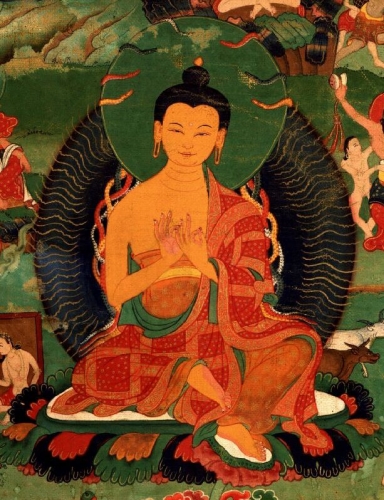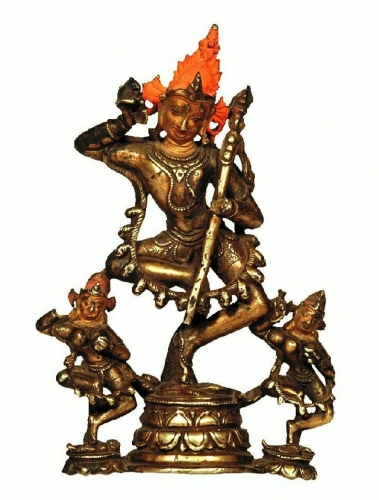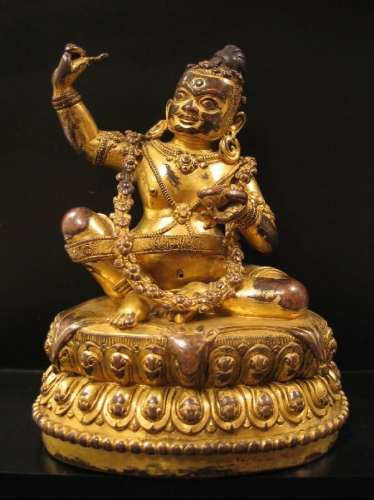Buddhist practice and Buddhist art have been inseparable in the Himalayas ever since Buddhism arrived to the region in the eighth century. But for the casual observer it can be difficult to make sense of the complex iconography. Not to worry—Himalayan art scholar Jeff Watt is here to help. In this “Himalayan Buddhist Art 101” series, Jeff is making sense of this rich artistic tradition by presenting weekly images from the Himalayan Art Resources archives and explaining their roles in the Buddhist tradition.
Himalayan Buddhist Art 101: Mahasiddha Appearance

Despite being a popular, well-known term in modern Tibetan Buddhism, mahasiddha remains widely misunderstood in regard to Himalayan art. In literature, mahasiddha refers to the mainly Indian Vajrayana teachers who were the progenitors and early lineage holders of important tantric practices. Mahasiddhas are those who have reached the highest level of attainment, known as the great accomplishment—or great siddhi.
There are several systems for counting and grouping these mahasiddhas that aid in determining their identities and places within the various hierarchies. These groups are most commonly comprised of 84 invididuals. In addition to at least five distinct systems of 84, there are also systems of eight, 50, and 100.

Both the monk Nagarjuna—the founder of the Middle Way—and the king Indrabhuti are prominently featured in the standard groups of 84 mahasiddhas. In Himalayan art, however, they do not possess the distinctive look that we call mahasiddha appearance, which, simply put, is the general appearance of a deity as taught in specific tantras. Mahasiddhas who do not manifest mahasiddha appearance appear normally as laypeople, kings, courtesans, and the like.

Mahasiddha appearance is likely unique to the “new” tantras of the later dissemination of dharma in Tibet and the Himalayan region. In the Hevajra and Chakrasamvaracorpuses of tantric literature, the practitioner is encouraged to take on the behavior, dress, and demeanor of the corresponding deities. Hevajra and Chakrasamvara are described as either slightly peaceful or slightly wrathful, also sometimes designated as rishi appearance, referring to the original Indian ascetics and holy men. Both deities have a slightly agitated or angry look and are adorned with bone ornaments, crowns, earrings, long hair, and tiger-skin skirts. They often carry unorthodox objects such as skull bowls, vajra scepters, curved knives, and tantric staffs.
The Indian teacher Virupa is a clear example of mahasiddha appearance. So is the 15th-century Tibetan teacher Tsang Nyon Heruka, who would publicly appear in deity garb and mimic his behavior. But, similarly to how mahasiddhas do not necessarily take on mahasiddha appearance, not all with mahasiddha appearance are mahasiddhas.
Thank you for subscribing to Tricycle! As a nonprofit, we depend on readers like you to keep Buddhist teachings and practices widely available.